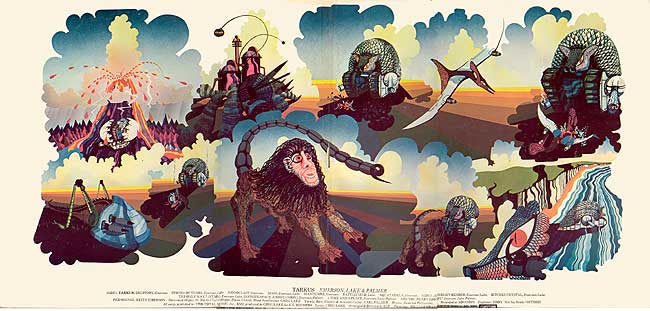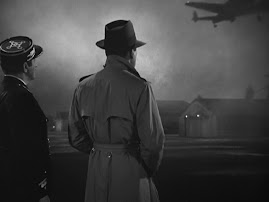Stand By Me
When the night has come
And the land is dark
And the moon is the only light we'll see
No I won't be afraid, no I won't be afraid
Just as long as you stand, stand by me
And darlin', darlin', stand by me, oh now now stand by me
Stand by me, stand by me
If the sky that we look upon
Should tumble and fall
And the mountains should crumble to the sea
I won't cry, I won't cry, no I won't shed a tear
Just as long as you stand, stand by me
And darlin', darlin', stand by me, oh stand by me
Stand by me, stand by me, stand by me-e, yeah
Whenever you're in trouble won't you stand by me, oh now now stand by me
Oh stand by me, stand by me, stand by me
Darlin', darlin', stand by me-e, stand by me
Oh stand by me, stand by me, stand by me
Thursday 26 June 2008
Otis Redding - STAND BY ME
OTIS REDDING - MY GIRL
MY GIRL
I've got sunshine
On a cloudy day.
When it's cold outside,
I've got the month of May.
Well, I guess you'll say
What can make me feel this way?
My girl. (My girl, my girl)
Talkin' 'bout my girl. (My girl)
I've got so much honey
The bees envy me.
I've got a sweeter songThan the birds in the trees.
Well, I guess you'll say
What can make me feel this way?
My girl. (My girl, my girl)
Talkin' 'bout my girl. (My girl)
Ooooh, Hoooo.
Hey, hey, hey.
Hey, hey, hey.
I don't need no money,
Fortune or fame.
I've got all the riches, baby,
One man can claim.
Well, I guess you'll say
What can make me feel this way?
My girl. (My girl, my girl)
Talkin' 'bout my girl. (My girl)
Talkin' bout my girl.
I've got sushine on cloudy day
With my girl.
I've even got the month of MayWith my girl.
Rock Me Baby-BB KIng/Eric Clapton/Buddy Guy/Jim Vaughn
Rock Me Baby
Rock me baby, rock me all night long
Rock me baby, honey, rock me all night long
I want you to rock me baby,
like my back ain't got no bone
Roll me baby, like you roll a wagon wheel
I want you to roll me baby,
like you roll a wagon wheel
Want you to roll me baby,
you don't know how it makes me feel
Rock me baby, honey, rock me slow
Yeah, rock me pretty baby, baby rock me slow
Want you to rock me baby, till I want no more
Under The Boardwalk
Under The Boardwalk
When the sun beats down and burns the tar up on the roof,
And your shoes get so hot you wish your tired feet were fireproof,
Under the boardwalk, down by the sea,
On a blanket with my baby, that's where I'll be.
From the park you hear the happy sound of the carousel,
You can almost taste the hot dogs and french fries they sell,
Under the boardwalk, down by the sea,
On a blanket with my baby, that's where I'll be.
Under the boardwalk, (Out of the sun)
Under the boardwalk, (We'll be having some fun)
Under the boardwalk, (People walking above)
Under the boardwalk, (We'll be falling in love)
Under the boardwalk, (Boardwalk!)
Oooh, la la la la la la.
Oooh, la la la la la la la la la.
Help me somebody, sing some la la's with me.
Under the night, under the stars by the raging sea.
Under the boardwalk, down by the sea,
On a blanket with my baby, that's where I'll be.
Under the boardwalk, (Out of the sun)
Under the boardwalk, (We'll be having some fun)
Under the boardwalk, (People walking above)
Under the boardwalk, (We'll be falling in love)
Under the boardwalk, (Boardwalk!)
SEX AND DEATH IN TRANSYLVANIA
Dracula turns 100 in 1997 - Bram Stoker's Dracula, as Francis Ford Coppola titled his fetid version of the off-filmed horror classic. The immortal count was not always as popular as he is on the eve of his centennial. Victorian critics halfheartedly praised Stoker, mostly admiring the author's "imaginative faculty, and many ingenious and gruesome details." Friends such as Arthur Conan Doyle congratulated him in measured phrases: "I think it is the very best story of diablerie which I have read for many years." The public was surprisingly indifferent. "Readers found nothing sexually unsettling about Dracula," writes Barbara Belford in Bram Stoker: A Biography of the Author of Dracula (Knopf, 396 pp). "No moralistic letters of outrage were published in the London Times, for who would admit to understanding its hidden messages?"
Belford postulates that Dracula is a kind of autobiography, "bristling with repression and apprehension of homosexuality, devouring women, and rejecting mothers." The famous scene in which the book's hero, Jonathan Harker, is seduced by three vampirettes - only to have the count interrupt the ersatz orgy with the cry, "This man belongs to me!" - dramatizes Victorian men's fear of sexually aggressive women as well as their abysmal urge for manly love. But Belford doesn't stop there.
"Stoker's realization that his mother was indeed a sexual being who belonged to his father finds an outlet in his fiction when he intermingles Oedipal conflicts with sibling rivalry, patricide and infanticide," she writes. She also suggests that Stoker's fascination with blood may flow from his mother's tales of a cholera epidemic (survivors fended off starvation by drinking blood from the family cow) or even a traumatic glimpse of afterbirth (he was one of seven children).
Thankfully, Belford dispenses with such musings when she begins her narrative proper and, all in all, Bram Stoker is a good read - no small accomplishment since her subject was unusually self-effacing for a gregarious Irishman. "Stoker dispersed memories as selfishly as an old crone ladling soup," writes Belford. She knows the era and its inimitable cast of characters, however, having written a biography of Violet Hunt, novelist and paramour to H.G. Wells and Ford Madox Ford.
Stoker was stingly with memories but saved all sorts of scraps and jottings related to his job as business manager of London's premier theater, the Lyceum, and devoted secretary to England's first knighted actor, Henry Irving. He was mesmerized by Irving from the first time he saw him on stage in 1872 in a now-forgotten comedy that nevertheless inspired Stoker to seek out a job as drama critic for the Dublin Evening Mail. Four years, later, Stoker reviewed Irving's performance as Hamlet, which in turn impressed the actor. They dined together and talked until dawn, the first of countless all-night conversations.
Stoker was born just outside Dublin in 1847, one year after the great potato famine that killed 1.5 million Irish and sent another 1.5 million abroad. The son of an ambitionless but conscientious bureaucrat, young Abraham was bedridden from an unrecorded malady until age 7. "All my early recollection is of being carried in people's arms and of being laid down somewhere or other on a bed or a sofa." he wrote, later excising the passage before publishing a memoir titled Personal Reminiscences of Henry Irving Belford notes that fears of death and abandonment haunt Dracula, an observation that needs no psychoanalytic support.
Despite these lost years, Stoker grew into a strapping youth, gaining renown as an athlete and a debater during his years at Trinity College. He was invited to join The Phil and The Hist, two prestigious societies. "Tall and ruggedly handsome, with gingercolored hair and an enthusiasm to belong, he was soon known around the green as a `clubbable man,'" writes Belford. He also was inclined toward hero worship and became an ardent fan of Walt Whitman, who was enjoying a vogue across the Atlantic in the early 1870s. Stoker corresponded with and later met the aging poet while touring the states with the theater company. "Whitman's influence on Dracula was profound," according to Belford, who notes similarities between poet and vampire. "Each has long white hair, a heavy moustache, great height and strength, and a leonine bearing."
The more important model for Dracula was Irving, a darkly charismatic egoist who excelled at playing villains, including Mephistopheles. From the time he signed on in 1878 to manage the fledgling Lyceum through the heady days of triumph when invitations to theater dinners were the most coveted in London, Stoker was Irving's shadow and servant. "When Stoker made his Faustian pact with Irving to be acting manager ... he knew Irving was his master," argues Belford. "That Stoker found this companionship endlessly rewarding in itself was obvious, but that he was not rewarded in kind was the disappointment of his life."
Certainly Stocker basked in Irving's glory and enjoyed socializing with the likes of William Gladstone, Richard Francis Burton and Ellen Terry, the Lyceum's leading lady. But Irving expropriated and exploited his manager's talents. Stoker not only developed the Lyceum into a first-rate theater, he attended to the actor's every need - writing his speeches, ordering his lunches, fending off favor-seekers. Once Irving insisted Stoker hire an old woman looking for work, suggesting she look after the theater cats. "We have three women taking care of the cats," pleaded Stoker. "Well, let her look after the three women that are looking after the cats," replied Irving.
Because Stoker himself was not nearly as eccentric as others drawn to seance society, Belford enlivens her story with cameo appearances by Helena Petrovna Blavatsky, founder of the Theosophical Society, and other amusing ghosts from the past. Fellow Dubliners George Bernard Shaw and Oscar Wilde loom large in the book - Wilde once having wooed the same woman Stoker married. Irving and Ellen Terry continue to steal Stoker's limelight even in his own biography.
Still, the author of Dracula rises transcendent in our imaginations. Like Lewis Carroll, whose place in history is assured by the phenomenal success of one unique work, Brain Stoker always will be of interest to the world. Unless, alas, we psychoanalyze the poor devil to death. Free to be titillated by the eroticism of Dracula we moderns have turned the vampire into the vamp. Exposing illicit pleasures to the light of day drives a stake through the heart of desire.
COPYRIGHT 1996 News World Communications, Inc.
SEXUALITY IN DRACULA
The battle towards modernization has been fought on several different battlegrounds. From movements such as the Industrial Revolution to the instituting of the Vatican II. However, one battle that still reigns today is the battle between modern and traditional views on gender and sexuality. In the novel Dracula by Bram Stoker the theatre of war changes to Victorian England and the battle between Count Dracula and Dr. Abraham Van Helsing. What this paper will analyze is the sexual and gender-related imagery in Dracula and the stance it took on how the two genders are to act.
The lines of gender are often unseen in the novel Dracula by Bram Stoker. This is shown through the reactions of the men to the situations in which they face. At times it can be assumed that their reactions and feelings towards a situation can be seen as rather weak and lacking machismo. The lines of Gender had become blurred by the differences between how a man or woman was supposed to act and react. When it came to the matter of Dracula this is not true. Dracula acts as the cheif reproducer and cause for vampirism in general, whereas characters such as Lucy Westenra who when she became a vampire was incapable of making more vampires. She was only capable of draining the blood of children and killing them. This gives off the image that reproduction is in the power of men alone and not in the power of women. This is the classical view of how men were supposed to be: strong, powerful, and well to do with women. Considering the role of Dracula is the role of the villian in the novel it can be assumed that the villainy is the traditional machismo view of men and not just the undead visage of such masculinity.
However, as much as Dracula is the masculine dominating character there is always the opposite. For instance, in the case of Johnathan Harker you are introduced to a character who is written as being so strongly affected by his contact with Dracula that he took on, “a grey look which deepened and deepened … till … the flesh stood darkly out against the whitening hair.[1]” To have the events that he had experienced with Dracula affect him so made it apparent that he was a sensitive and in traditional terms a weak man. Geddes and Thomson write that, “Man thinks more, woman feels more. He discovers more, but remembers less; she is more receptive, and less forgetful.[2]” This view of the male gender contradicts the actions of Johnathon Harker. Although his experiences with Dracula and the three women that reside with him are quite horrifying, a man was expected more or less to be manly and view the situation logically and not run away with greying hair.
Another example of Johnathon Harker’s femininity can be shown in the events which occured after the slaying of Lucy Westenra, “The moment we were alone in the carriage he gave way to a regular fit of hysterics. [...] He laughed till he cried and I had to draw down the blinds lest anyone should see us and misjudge; and he then he cried till he laughed again; and laughed and cried together, just as a woman does.[3]”The machismo that men of his time were expected to display was made irrelevant by the events that had come to pass before but men were not expected to be anything more but manly, and women were expected to be prone to hysterics and fits of emotion. When Dr. Seward uses the words, “…as a woman does” he dismisses the act in the carriage as being something of hysterics and therefore is something only women were seen as being capable of having.
Taking into consideration the remark made by Geddes and Thomson which viewed women as feeling more, receptive, and less forgetful. It would be good to note that the women in Bram Stoker’s Dracula take up the masculine role that the men have left behind. For instance in the character of Mina Harker we see a woman who is strong, calculating, and independent. She is a school teacher and is proficient at short-hand, she makes several copies of her journal, and successfully fights off Dracula’s charms on more than one occaision. She not only takes up the role of the receptive, less forgetful female; she also takes up the role of the thinking male. Without her help, the men of Dracula would have failed miserably at the task of destroying the vampire. Later in the novel her several copies of her journal, that she had produced using the manifold function on her typewriter, become essential in her survival when Dracula burned what was thought to be her only copy4. Although her masculine personality is clearly displayed she is also a woman who’s maternal instincts make her an extremely caring individual. This brings Dr. Van Helsing to comment on her being by saying she has the brain of a man but the heart of a woman5. This motherly and nurturing side of Mina makes her come to even feel remorse towards Dracula when he is being hunted6. Canny-Francis writes that, “men are still seen as dominating and controlling the agency by which women are recognised as intelligent; a woman is intelligent if or because men think she thinks like them.[7]” Therefore, Dr. Van Helsing’s comment that she has a man’s brain makes it just a masculine trait and does not define her as masculine.
The sexual concepts in Bram Stoker’s Dracula are found in the sexualities of the female characters. Mina Harker’s appetites are epecially interesting when she makes a reference to the New Woman’s sexual movement. She even boasts about her own and Lucy’s appetites when she writes, “I believe we should have shocked the ‘New Woman’ with our appetites.[8]” When Mina refers to this ‘New Woman’ she refers to a new stage of female sexual daring and prowess. Cranny-Francis notes that she is sexually childish and passive9, but this leaves the idea that she and Johnathon had engaged in sexual congress either before or after the wedding. However, when she is pursued by Dracula she becomes far more active and even more assertive. Cranny-Francis describes this as,
Then she is attacked by the vampire – and her sexuality, so effectively concealed by intelligence and motherliness, is made apparent. [...] The (displaced) oral rape is followed by the beginning of Mina’s metamorphosis – into a sexually assertive, sensual woman…[10]
This sexually assertive woman that had been created by the “kiss” of Dracula went against the traditional concept of sexuality and femininity. Therefore, the battle between the forces of traditionalism and the new concepts of sexuality rages on in the “soul” of Mina Harker.
Cranny-Francis believes that this does not mean in any way that Lucy Westenra had active sexuality or more-than-common awareness of sex11 she is only sexually active after she is, “kissed into sexuality.” Craft writes,
Dracula’s authorizing kiss, like that of a demonic Prince Charming, triggers
the release of his latent power and excites in these women a sexuality so mobile, so aggressive, that it thorougly disrupts Van Helsings compartmental conception of gender.[12]
The concept of the New Women and the classical idea of how a woman should act seem to be two forces at work in this novel. Craft also writes that, “…the traditional dualism most vigorously defended by Van Helsing and most subltly diverted by Dracula is of course, sexual…the vampiric kiss excites a sexuality so mobile, so insistant, that it threatens to overwhelm the distinctions of gender.[13]” The true battle that Bram Stoker writes about is not the battle of the living versus the dead, but rather the battle between traditionalist values, and the more or less modern views of the distinctions between man and woman.
Lucy Westenra’s painful transformation into the creature of the night that is eventually slain by Dr. Van Helsing and Dr. Seward is a direct symbol of sexualism. Craft writes:
Here is the novel’s real –and the woman’s only-climax, its most violent and misogynistic moment, displaced roughly to the middle of the book, so that the sexual threat may be repeated but its ultimate success denied[...][14]
Showalter views the imagery in this scene as being, “…embarrasingly clear.[15]” Her interpretation views the act of slaying Lucy as being a gang rape of sorts, and by utlizing almost Freudian imagery they slay her with an “impressive phallic instrument.[16]” The act of slaying Lucy is made possible by Dr. Seward driving a wooden stake through the hear of Lucy whilest Dr. Van Helsing cuts off her head and stuff her mouth with Garlic. According to Craft this scene clearly restores the sexual initiative established by men:
...by the negation of Lucy’s ‘aggressive’ (because apparent) female sexuality. She can henceforth live on as a beautiful, spiritual memory for all of them – her troublesome physical presence removed…A woman is … better dead than sexual17
The battle of Lucy Westenra’s spirit and sexual being ends in victory for the team of Dr. Van Helsing and Dr. Seward. Lucy now lives on as a beautiful memory and not the cursed being she had become through the modernist actions of Dracula.
The topic of homoeroticism is also prevalent in Dracula and can be found in the situation involving the contact between Dracula and Johnathon Harker. When Johnathon wakes after his first night in Castle Dracula he finds three beautiful women molesting and seducing him. Shortly after Dracula appears to ward off the strange women and declare, “How dare you touch him, any of you? How dare you cast eyes on him when I had forbidden it? Back, I tell you all! This man belongs to me.[18]” This denotes a sexual dominance over Johnathon Harker in which Dracula is the only one capable of “penetrating” him with his teeth. Craft supports this claim by adding
Dracula’s intercession here has two obvious effects: by interrupting the scene of penetration, it suspends and disperses throughout the text the desire maximized at the brink of penetration at the brink of penetration, and it repeats the threat of a libidinous embrace between Dracula and Johnathon Harker.[19]”
It is not implied that Dracula ever kissed Johnathon Harker instead he decided to use the man’s intelligence in Law, Customs, and the language of England. Dracula had no intention to use Johnathon in a sexual way, but he used the sexual dominance he had over Johnathon to get what he needed out of him. Therefore, the topic of homoeroticism is implied, but it is merely seen as a means to an end on the part of Dracula.
In Conclusion, Bram Stoker’s Dracula may be a work of fiction, but through the examination of it’s sexual and gender-related imagery it can be made certain that it is a manifestation of the battle that was raging on in Victorian England: Modernism and Traditionalism. Although the conclusion of this battle is still yet to be assertained, the eventual defeat of Dracula shows the reader that change is not yet acceptable.
Bibliography
Craft, Christopher. ””Kiss me with Those Red Lips”: Gender and Inversion in Bram Stoker’s Dracula.” Representations (1984): 107-133.
Cranny-Francis, Anne. “Sexual Politics and Political Representation in Bram Stoker’s Dracula.” Nineteenth Century Suspense (1988): 64-79.
Geddes, Patrick J. and J. Arthur Thomson. The Evolution of Sex. London: Walter Scott, 1889.
Showalter, Elain. Sexual Anarchy: Gender and Culture at the Fin de Siecle. London: Virago, 1990.
Stoker, Bram. Dracula. Hamondsworth: Penguin, 1994.
[1] (Stoker 344)
[2] (Geddes 271)
[3] (Stoker 209-210)
[4] (Stoker 340)
[5] (Stoker 281)
[6] (Stoker 367)
[7] (Cranny-Francis 70)
[8] (Stoker 110)
[9] (Cranny-Francis 69-71)
[10] (Cranny-Francis 71)
[11] (Cranny-Francis 68)
[12] (Craft 119)
[13] (Craft 117)
[14] (Craft 122)
[15] (Showalter 181)
[16] (Showalter 181)
[17] (Craft 122)
[18] (Stoker 53)
[19] (Craft 110)
PALESTINIANS UNWORTHY OF SOVEREIGNTY
Hamas has announced it will not "protect Israel from attacks by other factions". There is nothing new about this idiotic line of reasoning, of course, and it has been one of the standard canards ever since Israel began disbanding its occupation and transferring power to the Palestinians in 1993.
Wednesday 25 June 2008
FREE NATIONS
DON'T.
VISIT "FREE NATIONS" (http://www.freenations.freeuk.com)
WHAT YOU CAN DO
The destruction of 27 democratic constitutions, 27 national parliaments, 14 national currencies and 14 central banks by the "European" Union has been brought about by the same forces which were twice defeated in the first 50 years of the 20th century.
These various powers have now largely achieved what they fought two world wars to attain - an integrated anti-democratic, corporatist European Superstate under German domination.
Here is what you can do to make a difference: Most of these steps can be either y reproduced in or adapted to local national circumstances:
1. See the list of companies and individuals most identified with the destruction of the free nations of Europe (British Eurofederalists on this site). Boycott the companies and vote against the individuals and tell them why and what they need to do to regain your custom or vote (i.e. reject the Euro and the European Union, withdraw from any Eurofederalist business organisations and support a common market of sovereign democratic nations).
2. Similarly note the Eurofederalist MPs listed in that section and seek to have them de-selected and defeated - regardless of their party or political beliefs. Do not forget that there is no point in voting for an MP who shares some of your political beliefs if the Parliament to which he wishes you to elect him has no constitutional power to do anything.
3. In Britain - join the British Declaration of Independence (formerly the South Molton Declaration) and force your MP to sign before the next election. You can influence him/her by pledging your vote on the website www.bdicampaign.org Outside Britain ensure that the same kind of campaign is run in your country. The BDI is a mode which can be adapted to other countries - so long as the people have a vote! The BDI provides a solution to the grave crisis in Europe - by forcing your elected representatives to recognise the sovereignty of the people. The BDI allows the voter to take back control of the political process. If a political party provides an equal or better constitutional policy the BDI website will certainly inform you and recommend that policy.
4. Buy and distribute the leaflets. Hundreds of thousands of these have been bought and distributed and are influencing those who do not normally take an interest in politics and do not have time to read books. Use the facts and arguments in these leaflets in your letters to the press and MPs. Those outside Britain should translate the leaflets and use them in their campaigns.
5. Engage in day-to-day political affairs - writing to the press, writing to complain to your MP, going to public meetings. Politics is a grubby game which decent people find rather pathetic and so avoid. However, when your nation, your parliament and your democracy are in danger of extinction YOU MUST ACT.
5. Fight all Proportional Representation systems of voting. In Germany the Social Democratic Party - the Party of Chancellor Gerhard Schroeder - was found to be selling places on proportional representation candidate lists. In Cologne they had rewarded party supporters with well-paid jobs if they (among other favours) stepped down from their (usually high) place on the PARTY LIST.
All PR systems have lists of candidates for whom the electorate cannot vote but who nevertheless, if they are high up the list, will be elected to parliament under that system. PR systems give enormous power and patronage to the Party machine over its members and voters and therefore to the executive in Government over the Party. This naturally enhances the authoritarian nature of politics in those countries - and makes the destruction of their national constitutions rather easy, as we have seen in the European Union.
In Germany for instance the Free Democratic Party was in Government for decades without a break even though they averaged only 7-8% of the vote.
PR also means that even after the election no one knows who the Government will be - until the party hierarchies have, in smoke-filled rooms, bargained with usually small parties with less than 10% of the vote. It is at this stage that non-democratic power - like favours to trade unions and big business and the European Commission - can and do enter the equation.
All PR systems take power away from the true sovereigns - the people - and make the MP accountable not to the voters but to the party hierarchy and ultimately to the Government machine and anti-democratic corporatist interests.
ARABS WANT TO BE ISRAELIS
Anyone with any familiarity at all with the reality in Israel knows that an enormous majority of Arabs living in Israel would never dream of living in Palestine were there ever to be such a country, and it's not hard to fathom their line of reasoning: Israel is a free democracy with an ever-rising standard of living (and at the moment one of the strongest currencies in the world, but that's a different matter), while the Palestinians can be relied upon to screw up whatever chances they're offered with perfect consistency. That's why there was such an outcry among Israel's Arabs when in 2004 Arik Sharon proposed redrawing Israel's border so that the towns alongside the north-western flank of the West Bank be re-mapped into the West Bank. That's why Avigdor Lieberman is perhaps the most hated and feared of all Israeli politicians in the eyes of Israel's Arabs: he advocates a similar move. (And note: not a single Arab would have to leave his home. The border would simply be moved a few miles west, leaving the homes in putative Palestinian territory... shudder...).
Tuesday 24 June 2008
BATTLESTAR GALACTICA
All of the Battlestar Galactica productions share the same premise: In a distant part of the universe, a civilization of humans live on planets known as the Twelve Colonies. In the past, the Colonies have been at war with a cybernetic race known as the Cylons. With the help (knowing or unknowing) of a human named Baltar, the Cylons launch a sudden sneak attack on the Colonies, laying waste to the planets and devastating their populations. A few thousand of the human survivors flee into space aboard any spacecraft they can reach. Of all the Colonial Fleet, the Battlestar Galactica appears to be the only military ship that survived the attack. Under the leadership of famed military leader Commander Adama, the Battlestar Galactica and its crew take up the task of leading the small fugitive fleet of survivors into space in search of a fabled refuge known as Earth.
Main article: Battlestar Galactica (1978 TV series)
Glen A. Larson, the Executive Producer of Battlestar Galactica, has stated in many interviews that he originally conceived of the Galactica premise in the late 1960s, which he originally called Adam's Ark. However, he was unable to get the project greenlit for many years.
Battlestar Galactica was finally produced in the wake of the success of the 1977 film Star Wars. In fact, 20th Century Fox sued Universal Studios (the studio behind Battlestar Galactica) for copyright infringement, claiming that it had stolen 34 distinct ideas from Star Wars. Universal promptly countersued, claiming Star Wars had stolen ideas from the 1972 film Silent Running (notably the robot "drones") and the Buck Rogers serials of the 1940s. The lawsuit was eventually dismissed in 1980.
Initially, Larson envisioned Battlestar Galactica as a series of made-for-TV movies (a three-hour pilot and two two-hour episodes) for the ABC television network. A shortened version of the three-hour pilot, Saga of a Star World, was released in Canadian theaters (before the series aired) and American theaters (after the series aired), and instead of two additional movies, a weekly television series followed.
During the eight months after pilot was broadcast, 17 original episodes of the series were aired (five of them two-part shows), totaling 24 hours of broadcasting. Citing declining ratings and cost overruns, ABC canceled Battlestar Galactica in April, its last episode "The Hand of God" premiering on April 29, 1979.
Further information: List of Battlestar Galactica (1978, 1980) episodes
Main article: Galactica 1980
During the autumn of 1979, ABC executives met with Galactica's creator Glen A. Larson to consider a relaunch of the series. A suitable concept was needed to draw viewers, and it was decided that the arrival of the Colonial Fleet at contemporary Earth would be the storyline. A new television movie entitled Galactica 1980 was rushed into production. Again, it was decided this new version of Galactica would be made into a weekly series. Despite the early success of the première, the show failed to achieve the popularity of the original series and was canceled after only ten episodes.
In this 1980 sequel series, the fleet finds Earth and covertly protects it from the Cylons. This series was a quick failure due to its low budget (e.g., recycling footage from the 1974 Universal Studios film Earthquake, during a Cylon attack sequence), widely-panned writing, and ill-placed time slot (Sundays at 7:00 p.m., a time slot generally reserved for family-oriented programming and, more specifically, 60 Minutes). The show also had to adhere to strict content restrictions such as limiting acts of violence and being required to shoehorn educational content into the script and dialogue. To cut costs, the show was set mostly on contemporary Earth, to the great dismay of fans. Another factor for fan apathy was the nearly complete recasting of the original series: Lorne Greene reprised his role as Adama (and worked pro bono), Herb Jefferson Jr. played (now Colonel) Boomer in only half of the episodes (with almost no screentime), and Dirk Benedict as Starbuck for only one (the abrupt final episode), which was mostly unused footage from the original series. Some syndication packages for Battlestar Galactica incorporate the episodes of this series.
Besides a re-edited version of the pilot, released originally in Canada, Europe and parts of Latin America and, following the broadcast of the series, in the U.S., two other Battlestar Galactica feature films were released in cinemas. Both Mission Galactica: The Cylon Attack and Conquest of the Earth were made up of various episodes of the original series and Galactica 1980 respectively. (See: List of Battlestar Galactica feature films)
Attempted revivals
The original series maintained a cult fandom, which has supported efforts by Glen A. Larson, Richard Hatch, and Bryan Singer (independent of one another) to revive the premise.
Richard Hatch produced a demonstration video in 1998–1999 which featured several actors from the original series combined with state-of-the-art special effects. This video, titled Battlestar Galactica: The Second Coming, was displayed at science fiction conventions, but did not lead to a new series.
In 1999, Wing Commander producer Todd Moyer and original series producer Glen A. Larson revealed plans to produce a motion picture based on the television series.[2] [3][4] It would have featured Battlestar Pegasus.
In 2000, the director and an executive producer of the X-Men film, Bryan Singer and Tom DeSanto, began developing a Galactica television miniseries with Studios USA for FOX. Intended to air as a backdoor pilot in May 2002, filming was scheduled to begin in November 2001.[5] However, production delays caused by the September 11, 2001 attacks meant Bryan Singer had to drop out, due to his directing commitments on X-Men 2. This led Fox to lose interest in the project.
2003 reimagining
Main article: Battlestar Galactica (reimagining)
Despite attempts to revive the series over the years, none came to fruition until it was reimagined in 2003 by Universal Television in association with Sky One and the Sci-Fi Channel with Ronald D. Moore as the creative force behind it. Edward James Olmos stepped into the role of Commander Adama. A weekly new Galactica series followed, premiering on Sky One in the UK and Ireland in October 2004, and on Sci-Fi in the U.S. in January 2005.
Miniseries
Main article: Battlestar Galactica (TV miniseries)
In December 2003, the American Sci-Fi Channel broadcast a three-hour miniseries that reimagined Battlestar Galactica. This miniseries was so successful that Sci-Fi opted to develop this new version of Galactica into a television series.
Television series
Main article: Battlestar Galactica (2004 TV series)
Featuring critically-acclaimed veteran actors Edward James Olmos as Commander William Adama and Mary McDonnell as President Laura Roslin, the new series first aired in the UK and Ireland on Sky One in October 2004. The series debuted in North America on the Sci-Fi Channel in January 2005. Katee Sackhoff, Jamie Bamber, James Callis, Grace Park and Tricia Helfer round out the original cast.[6]
An edited version of the "pilot" miniseries was broadcast on NBC—a corporate sibling of the Sci-Fi Channel—on January 9, 2005, five days before the Sci-Fi series premiere.[citation needed] NBC also aired three selected first-season episodes to promote the show in advance of the second-season premiere in July 2005. Three seasons aired on Sci-Fi and Sky One between 2005 and 2007. A two-hour film (set during the show's second season), Battlestar Galactica: Razor, aired on Sci-Fi on Saturday November 24, 2007, as a prelude to the fourth season. A fourth and final season began airing on April 4, 2008.[7][8] Owing to production delays caused by the 2007-2008 Writers Guild strike, it has been reported that the fourth season will be split into two 10-episode pieces, the second part of which may air as late as 2009. The fourth season will also air on Universal HD beginning in July 2009. [9]
The series has won widespread acclaim among many mainstream non-genre publications. Time magazine,[10] Rolling Stone magazine[11] and New York Newsday[12] named it the best show on television in 2005. Other publications like The New York Times,[13] The New Yorker[14] and National Review[15] also gave the show positive reviews.
Webisodes
Main article: Battlestar Galactica: The Resistance
The webisodes were a series of shorts produced to promote the third season of the show. They filled in some of the events between the second and third seasons and featured some of the main cast. These webisodes were made so as not to reveal what would happen in the beginning of season three. Season 3 was also set up so that missing the webisodes would not leave a viewer confused about the story.
Each of the ten webisodes was approximately three minutes in length, and they were released twice a week leading up to the U.S. Season 3 premiere.
Main article: Battlestar Galactica: Razor
Battlestar Galactica: Razor is a television film produced and broadcast in the gap between Seasons 3 and 4. It chronicles events on Battlestar Pegasus in two time periods, both of which are "in the past" with respect to the Season 4 continuity. The "present day" framing scenes are set during Lee Adama's command, in the latter half of Season 2, while "flashback" scenes depict Helena Cain's command in the period between the Cylon attack and the reunion with Galactica in the second season episode Pegasus. It aired in the United States and Canada on November 24 and in Britain and Ireland on December 18, 2007. An expanded version was released on DVD on December 4, 2007.
Main article: Caprica (TV series)
Caprica is a proposed television series described as "television's first science fiction family saga". Caprica will be set on the fictional planet Caprica around fifty years before the events depicted in the 2004 reimagined series. The show will revolve around two families, the Adamas and the Graystones, the building of the Cylons, and the beginnings of the first Cylon War. A two-hour backdoor pilot is scheduled to air in late 2008.[16][17]
Main article: Battlestar Galactica (comic book)
A series of comic book publishers have adapted Battlestar Galactica since its inception.
Marvel Comics published a 23-issue comic book series based upon the show between 1978 and 1981. Other comics have since been published by Maximum Press, Grandreams, Look-in Magazine, Realm Press and, currently, Dynamite Comics. Of all these series, only those by Marvel, Grandreams and Look-In actually completed their storylines and brought the story to a conclusion. All the other series were canceled at various points during their run, with no resolutions.
Both the Grandreams and Look-In comic strips take place early in the series. The other comic series based on the 1978 series have been set after the final episode of the series and ignored Galactica 1980.
The Maximum press series began with the discovery of a completely unpopulated Earth some fifteen years after the conclusion of the TV show. The look and the feel of the comics had been changed considerably from the series, to give the stories a "more nineties" feel.
The Realm Press series picked up immediately after the conclusion of the final episode of the original series in an attempt to present what they called "Season two" of the original show.
Dynamite Entertainment are currently publishing comic books featuring both the classic and reimagined Battlestar Galactica series.
Games
A Battlestar Galactica video game was published on the Sony PlayStation 2 and Microsoft Xbox platforms.
Wiz Kids, Inc. (a collectible game manufacturer) produced the Battlestar Galactica Collectable Card Game based on the 2003 mini-series and 2004 TV show. The premier set of this game was released in May 2006. After the release of one expansion set, Wizkids announced the game's cancellation on March 13, 2007.[18]
The original series inspired a Battlestar Galactica board game. The game is set during a training mission, where two to four players maneuver pieces representing Colonial Vipers in order to capture a damaged Cylon Raider. Skillful play includes using terrain elements and a number of special-ability cards to the players' advantage.
A Battlestar Galactica role playing game was released in August 2007 by Margaret Weis Productions at Gen Con.[19]
A community-created space flight simulator game set in the Battlestar Galactica universe is in development. Beyond the Red Line is based on the open-source FreeSpace 2 game engine. In 2007 a multi-player demo, including three single-player missions, was released. Work on the full version of the game is continuing. Players can participate in deathmatch-style dogfight missions, or in team-based missions, on the side of the Colonials or the Cylons. Beyond the Red Line won the 2007 Mod of the Year award.[20]
Development of a community-created real-time strategy Battlestar Galactica game is also in progress. Battlestar Galactica: Fleet Commander is a Homeworld 2 total conversion. Beta versions of BSG: Fleet Commander are available for Windows and the Macintosh. Players command human or Cylon fleets from both the original series and the 2003 reimagined version of the series. [21][22]
Cylon Attack by A&F Software for the BBC Micro in the 1980's was another game based on the original series (1978)
Superscape, a mobile phone entertainment company, announced the launch of an action-game based on the series. Through a licensing deal with Universal Studios Consumer Products Group, the Battlestar Galactica mobile phone game is available for download now worldwide for Java enabled handsets.
FASA in 1979 released a tabletop counter piece game for Battlestar Galactica based on the fighter combat, which included the Galactica and a basestar to be launched from, attack with and attacked/defended. The counters for the Vipers and the Raiders included three model versions MKI/MKII/MKIII not just the MKII Viper and Raider MKI.
The computer game Epic released by Ocean software in 1992 featured a similar plot to Battlestar Galactica as well as similar ship models and characters.[23]
See also
Wikiquote has a collection of quotations related to:
Battlestar Galactica
List of Battlestar Galactica characters
Battlestar Galactica units
Battlestar Galactica (ship), which appears in the above works of fiction
Battlestar Galactica (video game), the 1978 and 2003 video games
Battlestar Galactica Collectible Card Game
Battlestar Galactica (comic book), the various comic book adaptations.
Battlestar Galactica terminology
Religious and mythological references in Battlestar Galactica
Battlestar Galactica Interview with cast members
References
1-^ People's Choice Awards Past Winners:1979 - pcavote.com
2-^ Glen Oliver (March 16, 1999). GALACTICA Reborn ((Todd Moyer talks to Glen about the new movie, Richard Hatch press release, etc. !!!)). aintitcoolnews.com. Retrieved on 2006-06-14.
3-^ Science Fiction News of the Week
4-^ BattlestarGalactica.com : 'Battlestar Atlantis - The Glen Larson / Todd Moyer partnership'
5-^ El Cosmico (February 22, 2001). A New BATTLESTAR GALACTICA Series Is Coming!. aintitcoolnews.com. Retrieved on 2006-06-14.
6-^ http://www.imdb.com/title/tt0407362/
7-^ Blend Television: Battlestar Galactica Premiere Date Set
8-^ LA Times Show Tracker: 'Battlestar Galactica': Say it ain't frakkin so!
9-^ Blend Television: Now That The Strike Is Over, When Will My Shows Come Back?
10-^ Time Magazine Dec. 16, 2005 issue
11-^ Rolling Stone Magazine Jan. 27, 2006
12-^ New York Newsday Dec. 25, 2005
13-^ "Ron Moore's Deep Space Journey," The New York Times July 17, 2005
14-^ "Across the Universe," The New Yorker Jan. 23, 2006
15-^ "Starborn Society," The National Review Jan. 20, 2006
16-^ The Hollywood Reporter: Sci Fi unveils 'Battlestar' prequel
17-^ Blend Television: Scifi Greenlights Battlestar Galactica Prequel
18-^ Battlestar Galactica Collectible Card Game
19-^ Gen Con 2007 In A Nutshell
20-^ Mod of the Year 2007, phase 2
21-^ BSG: Fleet Commander
22-^ Fleet Commander Development forum
23-^ MobyGames page for Epic
External links
Official site
Battlestar Galactica (pilot movie) at the Internet Movie Database
Battlestar Galactica (1978 series) at the Internet Movie Database
Battlestar Galactica (reimagined) at the Internet Movie Database
Battlestar Wiki
Battlestar Galactica (1978) at TV.com
Battlestar Galactica (2003) at TV.com
Amazon.com interview with Battlestar Galactica star Katee Sackhoff
spacecast.com interviews with the cast of Battlestar Galactica
THE INVADERS - TV SERIES - IMAGES

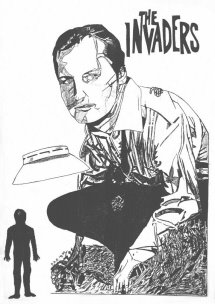
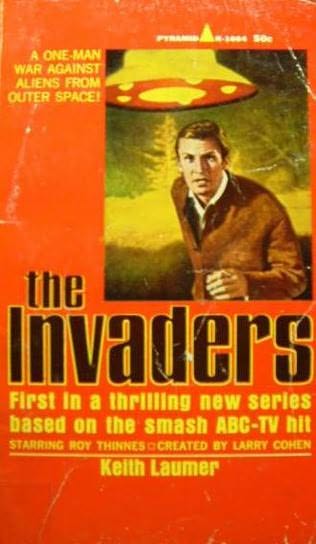


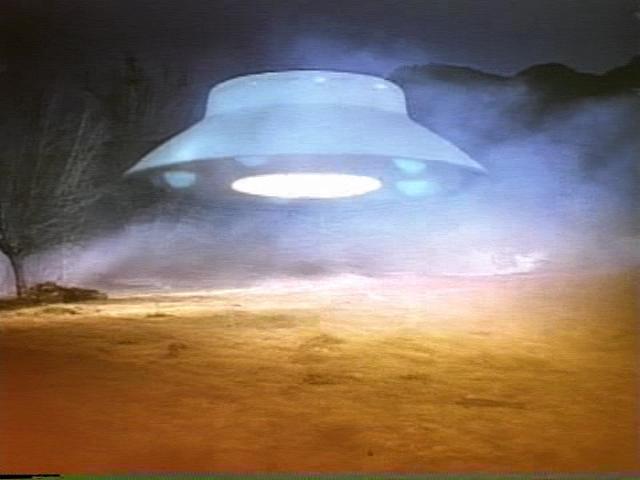








THE INVADERS
Season One has been released as a DVD set in the United Kingdom. The first season was released on DVD in the United States on May 27, 2008.[1] [2]
Narration
The Invaders, alien beings from a dying planet. Their destination: the Earth. Their purpose: to make it their world. David Vincent has seen them. For him, it began one lost night on a lonely country road, looking for a shortcut that he never found. It began with a closed deserted diner, and a man too long without sleep to continue his journey. It began with the landing of a craft from another galaxy. Now David Vincent knows that the Invaders are here, that they have taken human form. Somehow he must convince a disbelieving world that the nightmare has already begun.
Premise
The series was produced by Quinn Martin, who drew on two sources for the inspiration for the show. One was his previous series, the immensely popular The Fugitive, which had ended in 1967. Unlike Richard Kimble of The Fugitive, however, David Vincent of The Invaders is more the pursuer than the pursued.
Another inspiration was the wave of "alien dopplegänger" films which had come ten years before in the 1950s, typified by Invasion of the Body Snatchers (1956) and the British film, Quatermass 2 (1957), known in America as Enemy from Space. While these paranoid tales of extraterrestrials who posed as humans and lived among us while planning a takeover are usually linked with a Red Scare subtext, Martin simply wanted a premise that would keep the hero moving around and that would explain why he couldn't go to the authorities (not only had the aliens infiltrated human institutions already, but most humans would dismiss a claim of alien invasion as a paranoid delusion).
Roy Thinnes starred as architect David Vincent, who accidentally learns of an alien invasion already underway and thereafter travels from place to place, trying to foil the aliens' plots and warn a skeptical populace of the danger. As the series progresses, Vincent is able to convince a small number of people to help him fight the aliens, most significantly millionaire industrialist Edgar Scoville (Kent Smith) who became a semi-regular character as of December, 1967.
The Invaders were never given a name, nor was their dying planet. They were not even shown in their true, alien form; their human appearance was a disguise. Unless they received periodic treatments requiring equipment that consumed a great deal of electrical power, they would revert automatically to their alien forms. One scene in the series showed an alien beginning to revert, filmed fuzzily and with flashing lights.
They had certain characteristics by which they could be detected, such as the absence of a pulse. Nearly all were emotionless and had little fingers which could not bend, although there were many "deluxe models" who could manipulate this finger. There were also a number of mutant aliens, who unlike the majority of aliens had emotions similar to those of humans, and who opposed the alien takeover. Their existence could not be documented by killing one, for their dead bodies would always glow red and disappear, along with their clothes, any items they were carrying at the time and anything they touched when dying.
 An Invader ship landing.
An Invader ship landing. The spaceship by which they reach the Earth is a flying saucer of a design derivative of that shown in the contestable photographs of George Adamski, but instead of having three spheres on the underside, the Invaders' craft has five shallower protrusions. It was a principle of the production crew to not show them with set and prop designs and control panels that were utterly alien from the conventional human ones (such as H.R. Giger would later present in Alien). The Invaders' favorite means of killing someone is by applying a disk with five glowing lights to the nape of the neck, which will cause a cerebral hemorrhage.
In 1995 the series was reprised as a three-hour TV miniseries also titled The Invaders. Scott Bakula starred as Nolan Wood, who discovered the alien conspiracy, and Roy Thinnes reprised his role from the series of David Vincent, now an old man handing the burden over to Wood. The miniseries has been released in some countries on home video, edited into a single movie.
Books
There was a total of seven paperbacks and two hardback published based on the TV series:
by Pyramid Books in the US, all in 1967 : Invaders and Enemies from Beyond, both by Keith Laumer; Army of the Undead by Rafe Bernard.
by Corgi (a Transworld imprint) in the UK : Halo Highway by Keith Laumer (1967), Meteor Man, by Keith Laumer under the pen name "Anthony Le Baron" (1967), The Autumn Accelerator by Peter Leslie (1967), Night of the Trilobites by Peter Leslie (1969).
by Whitman (a subsidiary of Western Publishing) in the US in hardback : Dam of Death by Jack Pearl (1967).
The Invaders: Alien Missile Threat, by Paul S. Newman, A Big Little Book, Whitman Publishing Company, 248 pages, hardcover, 1967.
Note that Army of the Undead by Pyramid and Halo Highway by Corgi are the same story.
Trivia
The pilot episode of the series, "Beachhead", was remade years later in 1977 for another Quinn Martin series, Tales of the Unexpected, where it was retitled "The Nomads".
Gold Key Comics published four issues of an Invaders comic book based upon the TV series in 1967-68, years before Marvel Comics published their own, unrelated Invaders superhero series.
A pre-Internet urban legend (of the missing show kind) has circulated about a hypothetic final episode of the original series. According to it, David Vincent finally manages to convince the authorities and the mainstream of the Invaders' plans, and a massive invasion attempt is successfully thwarted. However, the final scene shows Vincent speaking through a transmitter to a different species of space invaders, to tell them that the coast was now clear -i.e. Vincent's fight had taken place in his position as a mercenary of the second alien race.
Episodes
Season one (1967)
1-Beachhead
2-The Experiment
3-The Mutation
4-The Leeches
5-Genesis
6-Vikor
7-Nightmare
8-Doomsday Minus One
9-Quantity: Unknown
10-The Innocent
11-The Ivy Curtain
12-The Betrayed
13-Storm
14-Panic
15Moonshot
16-Wall of Crystal
17-The Condemned
1-Condition: Red
2-The Saucer
3-The Watchers
4-Valley of the Shadow
5-The Enemy
6-The Trial
7-The Spores
8-Dark Outpost
9-Summit Meeting - Part 1
10-Summit Meeting - Part 2
11-The Prophet
12-Labyrinth
13-The Captive
14-The Believers
15-The Ransom
16-Task Force
17-The Possessed
18Counterattack
19-The Pit
20-The Organization
21-The Peacemaker
22-The Vise
23-The Miracle
24-The Life Seekers
25-The Pursued
26-Inquisition
External links
The Invaders at the Internet Movie Database -- the original series
The Invaders at the Internet Movie Database -- 1995 miniseries/movie
The Unofficial Web Site and Episode Guide -- fan site


